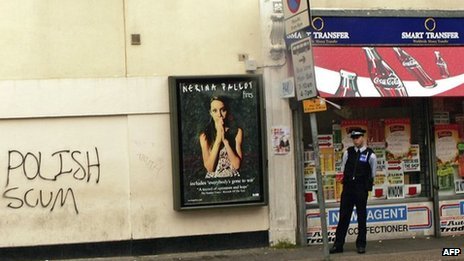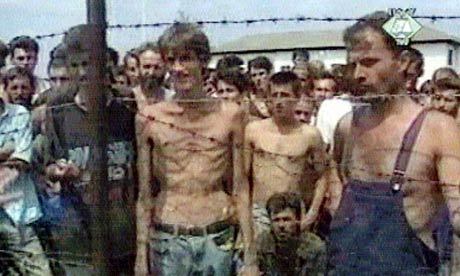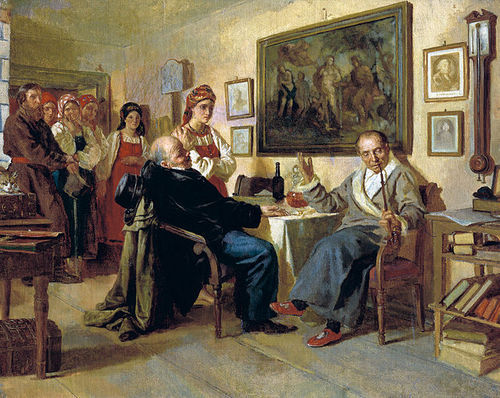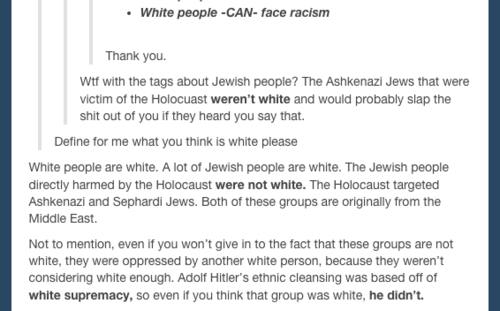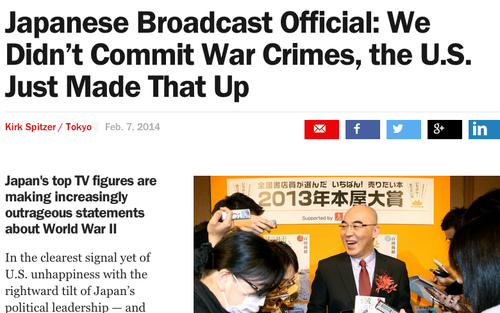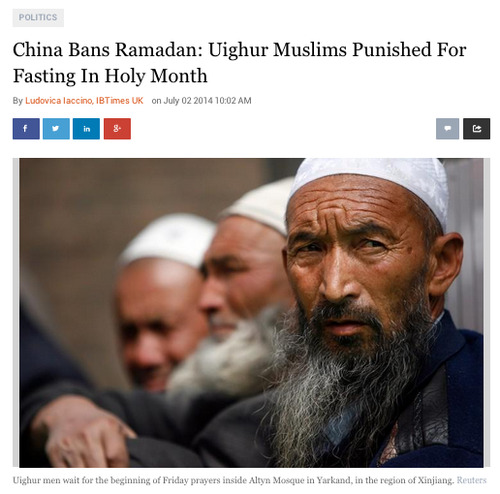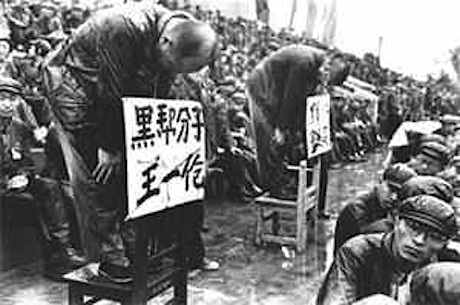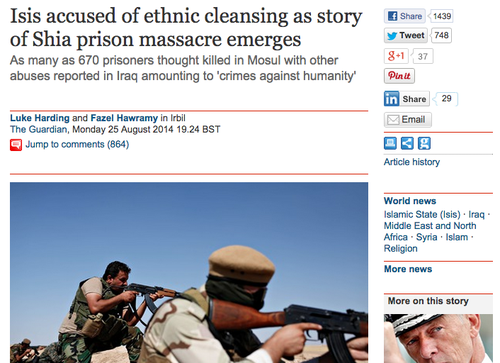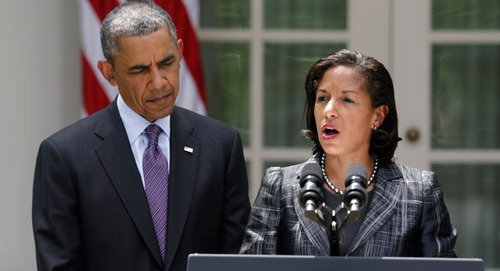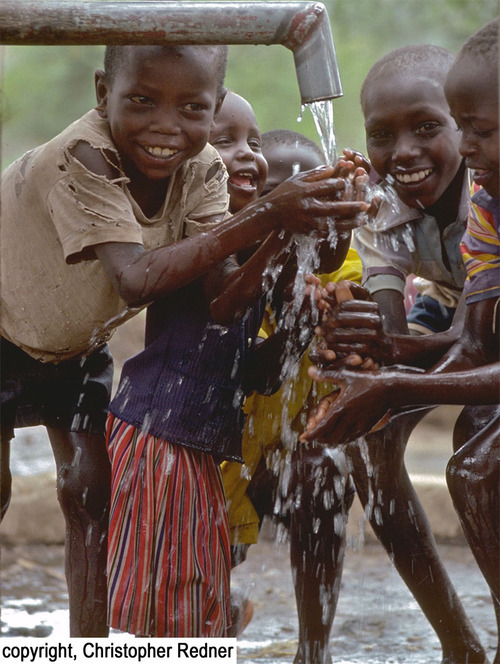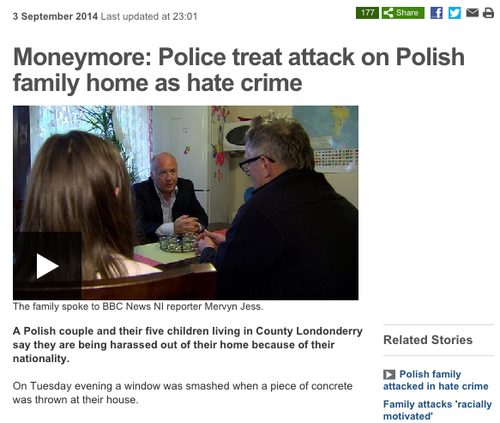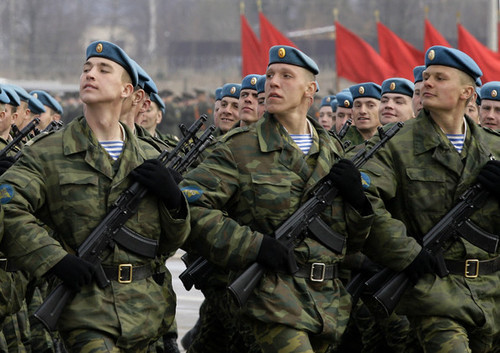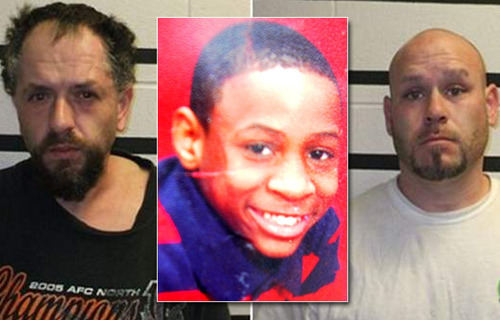The Equal Justice Initiative is building a memorial for lynching victims — and it’s about time.
The Equal Justice Initiative announced on Tuesday that it will build the first-ever national memorial to lynching victims in Montgomery, Alabama. Titled “Memorial to Peace and Justice,” the EJI project will sit on six acres of land that used to be a public housing project in Montgomery.
The structure will include the thousands of lynching victims’ names on concrete columns, which will represent hundreds of U.S. counties where the acts took place. The memorial will also coincide with the opening of a museum.
follow @the-movemnt
A WHITE HIGH SCHOOL FOOTBALL STAR VIOLENTLY RAPED A GIRL, FILMED IT, AND PUT IT ONLINE BUT HE SHOULDN’T GET PUNISHED.
A BLACK KID CARRYING SKITTLES GETS SHOT AND WAS A THUG.
A WHITE KID SHOOTS UP A UNIVERSITY BUT HE WAS SUCH A GOOD KID.
AN UNARMED BLACK KID GETS SHOT 6 TIMES AND DESERVED TO DIE.
A WHITE GUY RAPES HIS THREE YEAR OLD DAUGHTER, BUT DOESN’T GO TO PRISON.
A BLACK KID WITH A BB GUN IS SHOT AND KILLED ON SITE.
Something is wrong.
I’m not saying white privilege doesn’t exist on a global scale, it does. It just bothers me when Americans try to dictate other people’s identifies when they know nothing about their country, or their people’s struggles, or treat everyone as though they’re American/responsible for American issues, while at the same time not caring at all about issues in other countries.
that imo is “American privilege”- it’s a problem here on tumblr. Like yeah, to my American followers, I know lots of you try to learn and I wouldn’t generalise to say all Americans do this- but there’s a big problem especially amongst popular social justice blogs here.
What is very disturbing about the tumblr social justice discourse is that a lot of popular US social justice bloggers like to splatter the US categorisation of race and understanding of racism over the rest of the world. Race, and racism- are both social creations. Therefore, it only makes sense that they can vary from society to society. Here are some issues:
1. Things like insisting that white people cannot face racism in the world. I’m sorry, but I can tell you that’s BULLSHIT in Europe, at least. How people are othered operates differently sometimes. It’s pretty obvious I have Chinese ancestry, for example, but I speak fluent English. That often makes me seem more assimilated and less of an “Other” in the UK, than the immigrant worker from Poland whose accent is plainly obvious. Do Chinese people face racism in the UK? I’m sure they do sometimes.
- But my point is that the way xenophobia and hostility is targeted isn’t always based on skin colour. The Holocaust, the Nazis’ deliberate starvation and mistreatment of Soviet soldiers, the genocide of Bosnians by Serbians are all instances where genocide was committed against people who WOULD be racialised as “white” in the US, who were genetically European. I will seriously throttle anyone who dares to suggest no racism is involved or tries to literally posthumously say claim the victims are “POC” to fit their narrative that global oppression is “White people oppressing POC!!!” ( E.g “Bosnians were not really white because they were Muslims.” WRONG. Genetically they are Slavic people- like Russians, Ukrainians…and Serbians themselves). There was more about cultural otherness, religious divisions at play here, about Serbian nationalism really, rather than seeing Bosnians as “less white”.
Bosnian Muslims in concentration camps in the 1990s
- The experiences of “white people” are far from universal AND they can be very familiar with racism, oppression and marginalisation. I mean like try telling a recent Russian immigrant to the US who was descended from Russian serfs that he has MORAL RESPONSIBILITY for slavery in the US? Geez. Yes, maybe he’d benefit from “white privilege” but to say his ancestors benefited from it would be nonsensical when they were getting similarly abused by landowners in the 1800s Imperial Russia. Please tell me how a US POC is necessarily always more familiar with oppression than a Polish person or German whose family lived under Soviet authoritarianism right up till 1989, who lived in fear of the Stasi, aka the East German secret police?
An extremely privileged, white Russian serf girl listening as two landowners bargain over how much they want to pay for her.
- This is an example of ridiculous mental gymnastics to maintain the “White people oppress POC!!!” paradigm.
Haha, ok. So this person (it’s a US blogger) has proclaimed Ashkenazim are not white. Alright, how about some…experts? Like real Ashkenazi Jewish people?
- How about this other Jewish person’s opinion?
- See? The “wtf Ashkenazim aren’t white they will slap you” person was American-splaining (yes, they are American) European race categories with clearly a US-centric understanding of race and subconscious failure to realise for Ashkenazi Jewish people, the definition of whiteness CAN FLUCTUATE in the US vs Europe. I understand that how Jewish people conceptualise identity can vary and may not fall neatly into “whiteness” or “non-white”. But the quarrel I have with that comment is because it’s obvious that person completely refused to countenance the notion that those people murdered in the Holocaust could be “white” because they don’t want to think about the complexity of racism around the world, they just want to perpetuate the narrative that racism globally is “white people oppress POC!!!” And that’s wrong, if you are gonna distort and step on other victims’ experiences for your own ends, no matter how noble your own cause is.
- (Btw, MANY Ashkenazi Americans identify and do look “white” in the US.) Genetically, studies show they’ve enormous amounts of European ancestry because it seems European Jewish communities were formed from constant intermarriage with European women for CENTURIES, before they started to marry within the community. Just imagine how minimal their non-European heritage might be by then- 80% of Ashkenazim can trace their maternal line to prehistoric Europe. See why oversimplifying Nazi racism as “less-white” is kind of a wrong paradigm to understand it? And how it’s kind of wrong if you are so insistent on denying “white people” can face racism when we are not talking about neo-Nazis saying “white genocide!!!” about immigration, but real crimes against people?
2. “POC” cannot be racist. Sure. I’m laughing. I guess it wasn’t racism AT ALL when officers in the Imperial Japanese Army said they saw Chinese people as “subhuman”. When one of my family’s most awful experience of imperialism was under the Empire of Japan during World War 2. Where Chinese people were buried alive and experimented on. Young men executed en masse. Women forced to become “comfort women” (aka forced prostitution) to service the Imperial Japanese Army. So, my teenage grandmother bound her chest, cut her hair and rubbed her face with ash- and spent the entire time disguised as a boy in order that she wouldn’t be raped. All war crimes the Japanese government doesn’t want to apologise for even till today.
How about the fact that the people of a group who were victimised at one point can also have racist and discriminatory policies themselves?
And hurt their OWN people too?
Purges during the Chinese “Cultural Revolution”.
- So, saying “POC” cannot be racist (or oppressive in general) is offensive precisely because it lets governments who haven’t apologised off the hook. Because, hooray, all racism and oppression only comes from what is the US understanding of “white people” (European origin?) ! How about Ottoman Turkey’s genocide of 1 million+++ Armenians, Greeks and Assyrians? (Greeks! “White” victims at the hands of “non-white” people? I know, shocking, but it has happened. Also, it’s another debate whether Turkey can be so easily be considered “non-European”.) Hideous things like forced death marches to the desert. If what the white settlers did to the Native Americans is genocide, what the Ottoman Empire did to their Christian subjects sure as hell is genocide too. Like you know what, yes I’m glad Turkey criticises Israel for its policies towards Palestinians which indeed look like ethnic cleansing- but at the same time…I think, “what about you? When are YOU going to admit those 1 million people were murdered because you wanted to exterminate them?”
Wanna bet that anon earlier doesn’t know who this guy is? He’s Mehmet Talaat Pasha btw, Grand Vizier of the Ottoman Empire and chief architect of the Armenian genocide.
- How about the “Death Railway”, where plenty of “white” POWS died working in conditions of near slavery building a railway line for the Empire of Japan, treated no better than the Asian labourers working alongside them?
- How about things like this, happening right now?
- That’s why the term “POC” doesn’t speak much of solidarity to me with that kind of history. Outside the US…it’s very often meaningless. In Europe, it’s already problematic because it obscures inter-European racism, and in countries where non-European people are a majority, some of the worst things we have suffered were by the hands of other “POC”. And that is exactly why the term “POC” and the entire “white people oppress POC” dichotomy SHOULD NOT be indiscriminately spilled all over non-US contexts and pre-US history.
3. If you’re an American person of colour, I’m going ask you, as a non-American and fellow non-white person, to think twice about trying to claim solidarity with all non-white people around the world and blaming all problems like modern capitalism and exploitation on “White supremacy”. Because that is not true, because that is a shameful abdication of recognising our moral culpability in other forms of oppression.
- Like…US POCs, imo, are quite culpable in US foreign policy imperialism. How can they not be? Many do benefit from America’s political hegemony over the world even if within their country they’re less privileged than white Americans and still face discrimination. But vis a vis some poor person in another country about to be trampled by the boot of US foreign policy, they are privileged. Many US POCs serve in the US Army. The President is a person of colour.
- One cannot claim equivalency in marginalisation with the Pakistani man whose family was killed in a mistargeted drone strike- because you are a US citizen. Just as I can’t claim I’m somehow as oppressed by capitalist exploitation as those Chinese villagers whose water supply got poisoned by factories making goods for the MNCs. Because although my great grandparents were poor Chinese who left China amidst the strife caused by the Opium Wars, I am not them. I had an infinitely more privileged upbringing, because I am a consumer in the developed world and actually on the other side- the side that in many ways enables oppression. My hands may be clean vis a vis white supremacy, but they ARE NOT when it comes to the way the developing world is exploited. Are wealthy Chinese businesspeople who mistreat their workers free of moral blame?
Are these people
as underprivileged or institutionally oppressed as these?
Are these two’s experiences, privilege and power
EXACTLY the same as these rural Kenyan kids- who are happy that they now have access to clean running water?
(Yes, Kenya and the African continent as a whole have made great strides. But it is a fact that these children face more challenges and have fewer opportunities and are much less privileged than most Americans.)
NO.
Just because we have been wronged by others in the past doesn’t mean we may not be hurting others now, and that we don’t have a responsibility to stop it.
It is one thing to talk about your own experiences and raise awareness about the injustices you face. That is great and should be supported. But it is another to step on other victims so your narrative of oppression is the loudest and drowns them all out. Oppression is not a contest, and we can talk about our experiences in SOLIDARITY with one another, recognising that throughout human history, racism and oppression has worn MANY faces around the world- not just white ones.
Lol no white people cannot face racism nice try though
Did you even read my post? I’m guessing not.
Racism is a dynamic between oppressor and oppressed, and yes there is no “reverse racism”, but there are places where other faultlines beyond skin colour exist. Which means people you like to homogenously lump together as “white” actually don’t see themselves uniformly. Just like the Japanese sure as hell didn’t see we Chinese as “yay Eastasians!” during WW2 when they massacred 300,000 people of my ethnic group in Nanking, or how the Rwandan Hutu extremists saw Tutsi as “cockroaches” even though they were both African, even though plenty of Hutu-Tutsi marriages had taken place before the genocide. Unlike the Americas, in Europe, where because a lot of people there are white, other stuff like language, culture, history and geopolitics actually often becomes used as an excuse to murder entire groups of people.
Clearly, you know more about what is or isn’t racism than the law enforcement, than people like the British police– who have dealt with everything from neo-Nazis to attacks on black African immigrants to attacks on Muslims. It’s not like they have the statistics to know there is systemic racism against Poles to arrive at this conclusion or something. It’s not like they’ve had responded to numerous reports of anti-Polish graffiti. It’s not like they know recently, a man got beaten up by 15 people outside a London pub, who yelled “go back to Poland!”
Clearly, your assessment that white people cannot face racism is more correct than the International Criminal Tribunal for Yugoslavia, which held that the Srebrenica massacre of Bosnians in the 1990s was genocide. Clearly, you know more typing on your blog than these people trained in international law and the genocide convention, than the witnesses who actually dug up all the bodies of the victims in their mass graves.
Clearly, what the Greeks experienced at the hands of the Ottoman Empire- forced death marches, massacres, summary executions, forced removal from their lands and destruction of the Christian religious symbols was not racism at all. Because, their magical white skin protects them from experiencing racism, and the fact that they were followers of a minority religion in an Islamic country and a minority ethnic group without much institutional power is totally irrelevant.
Clearly, this Czech Jewish girl, with blonde hair and fair skin, must definitely be a POC since she was murdered in the Holocaust. Her name is Hana Brady, btw. Unless you want to say the Holocaust wasn’t about racism, about Nazi Aryanism. Because racism is only the US flavour of white vs POC, because other forms like Aryanism don’t exist. Nevermind how often the Nazis called Jewish people “vermin” and “subhuman” and an “inferior race” and the Holocaust a “purification” of Germany.
Clearly, white people cannot face racism even though the Holocaust is an internationally-recognised genocide. Because you say so. Or are European Jewish people all “POC”? Hmm? This is amazing. I’m glad the most major genocide in the 20th century wasn’t about racism after all. Humans aren’t so bad after all!
You may also want to share your amazing findings with historians, human rights lawyers and legal scholars regarding the way the Nazis deliberately starved and abused Soviet POWs to the extent 60% died in custody, compared to less than 5% for British and Americans. Cos, y’know, they think it is genocide. Cos historians know about Generalplan Ost, and how the Nazis elaborated how they intended to exterminate Eastern Europe of Slavic people to increase German living space.
Or alternatively, you may wanna tell these Russian soldiers that you have just discovered they are not white after all, that they are POC, since racism cannot happen to white people.
Or you can do the easy thing which is to take off your American-centric lens, realise there is a whole different world outside the US and Canada, and recognise that racial Othering and discrimination doesn’t always function based on skin colour differences.
Thank you. Thank you so much.
Racism – prejudice, discrimination, or antagonism directed against someone of a different race based on the belief that one’s own race is superior.
If you are prejudice against someone of a different race than yourself, you are racist. Reverse racism doesn’t exist but racism isn’t mutually exclusive to white people oppressing and being prejudice against POC. The term ‘reverse racism’ and the majority of tumblr’s social justice culture is an AMERICAN version of racism. Here in America, yes POC have it harder than white people. That’s not debatable.
But America isn’t the end all be all of the world and the problems here are not equal to or reflect the problems happening around the world. Something that is considered racist here in america (For example Avril’s Hello Kitty song) has people in Japan extremely confused when people in America come to them asking them what they think about it and that they’re sorry for how racist she is.
Racism happens everywhere, not just in white centric America. While it’s not a contest to see “who’s more oppressed”, there is a huge issue that American’s have, white, black, asian or whatever. We are opinionated and most of the time forget, that the universe does not revolve around us and our countries internal problems.
Media Coverage Attacks 16-Year-Old African American Rape and Murder Victim For ‘Troubled Past’
Strangely enough, in the Dayton, Ohio area, we haven’t heard a lot about the case of two Franklin men who recently beat an African American teen to death. Don’t get me wrong, they’ve talked about it on the news, but it has received disproportionately little coverage compared to many other issues. To make matters worse, when the local news has covered this story, they have tended to implicitly blame the victim – 16-year-old Dione Payne – who was raped, and beaten to death by Michael A. Geldrich, 36, and Michael J. Watson, 39.
The men have been arrested, arraigned and charged with aggravated robbery and murder. They are currently in the Warren County Jail.In a sworn affidavit signed Monday by Franklin Detective Jeff Stewart we are told that “During the robbery Geldrich struck the male victim (later identified as Payne) with a table leg, fists, stomped the male with his boots and repeatedly struck the male victim’s head against the floor.”The two rapists then dumped Payne’s nearly dead body off around 10:30 a.m. in the emergency room at Atrium Medical Center in Middletown, not far from where they lived. The two seemed worried that they had “over done it” and knew that they would likely face an investigation if Payne were to die. They were right.The hospital reported that upon arrival he was in critical condition and had “heavy damage to his head and was bleeding from his ears,” according to the police. Payne also had “heavy damage done to his chest from what appeared to be someone striking him repeatedly.”The injuries were too severe for the small Middletown hospital to handle, so he was promptly transferred to Miami Valley Hospital in Dayton. Upon further examination, the MVH workers discovered that Payne had been sexually assaulted. Hospital personnel there contacted Middletown police and stated the teen appeared to have been sexually assaulted, according to the police report.Payne’s mother Tamiko Payne told a family friend Donna Parson that the family considers this a premeditated act, and thus want both men to receive the death penalty.“This is what they deserve. Death. This was a 16-year-old boy (beaten) by two full-grown men,” she explained.Meanwhile, Local Dayton Daily News seemed most interested in emphasizing two things throughout their reporting, in the article, ‘Dayton teen beaten to death had troubled past’:1. That the 16-year-old rape and murder victim had a “troubled past”, bringing up narcotics possession and sales on the youth’s juvenile record. They emphasize that he was just released October 22 from the custody of the Ohio Department of Youth Services. They even note that he was arrested for littering recently. Why such a hyper-fixation on his juvenile record? Isn’t this a case, a story and a tragedy about assault, rape and murder? Why should the local media focus so much on what thevictim has done in his past?2. That Franklin Police Chief Russ Whitman emphasized that “there is no evidence whatsoever” the rape, beating and murder of Payne was racially motivated. Perhaps they suspect that this was the first time the two men had ever purchased drugs, or maybe that they had raped, beaten and murdered other people they had bought drugs for.According to Dayton Police reports, that incident involved him firing five shots at his mother’s boyfriend after an argument at the family’s home in October of 2012. Payne was arrested on a warrant several weeks later when he was stopped for littering in the DeSoto Bass neighborhood several blocks from his house. He was transported to juvenile detention where a small amount of cocaine was found in his pocket, according to the report.The police offer no evidence nor even propose a motive for this attack and murder. Why? And more importantly, why is the local Dayton media trying to highlight statements that would exonerate the rapists and murderers from hate crime charges, while simultaneously focusing on the low points in the youth’s life that in no way justify nor caused his physical and sexual assault, as well as murder?Throughout the Dayton area, the African American community is saying they are not surprised. Dayton has a long history of slanted, anti-African American reporting such as this, where the victim is first and foremost blamed for whatever happens to them.“All evidence points to the crime being drug-related,” Dayton Daily News emphasized Chief Whitman’s statement. “Any suggestion that this is a ‘hate crime’ or racially motivated is not based upon actual evidence.”Strange, since so incidences like this are relatively unheard of in the area, regardless of whether drug sales are involved or not. Why are the police so quick to dismiss a motive of racism, and perhaps just as importantly, why is the local media asleep at the wheel?(Article by Micah Naziri; image via PBSpot)This is deplorable.
Battered women morally entitled to kill abusers, U of O professor asserts
OTTAWA — Battered women are morally entitled to kill their abusive partners, even those who are passed out or asleep, says a respected University of Ottawa law professor.
Elizabeth Sheehy raises the provocative idea in her new book, eight years in the making, called Defending Battered Women on Trial. It will be published Dec. 15 by UBC Press.
“Why should women live in anticipatory dread and hypervigilence?” she writes in the book’s concluding chapter. Would it not be just, Sheehy asks, “to shift the risk of death to those men whose aggressions have created such dehumanizing fear in their female partners?”
In an interview with the Citizen, Sheehy — who received a prestigious award from the Canadian Bar Association for her scholarship on women and the law this summer — answered that question in the affirmative.
Battered women can justly kill abusive partners “because a woman in that circumstance has already lived in captivity,” she said. “She’s already lived in a form of imprisonment and enslavement in a relationship like that.”
Sheehy likened women in abusive relationships to prisoners of war. “We would never say of a prisoner of war that it’s not just that she or he kill their captor to escape. It is just to kill to escape that kind of enslavement.”
While the legal system sometimes excuses battered women who kill abusive partners by accepting a verdict of manslaughter on compassionate grounds, that does not go far enough, Sheehy argues. “We should say you were right to kill to save your own life.”
Sheehy’s book, which is written for a general audience, is built around the trials of 11 battered women, 10 of whom killed their partners. She draws heavily on trial transcripts to examine the evidence and the legal strategies of the defence lawyers.
To select those 11 trials, Sheehy studied 91 cases of battered women who killed their partners between 1990, when the Supreme Court of Canada recognized “battered women syndrome” as a legal defence, and 2005. In all of those cases, she writes, self-defence was at least arguable.
Sixty-two were ultimately convicted of some form of homicide — 49 pleaded guilty to manslaughter — and the other 29 were either acquitted or spared a trial.
Sheehy was pleasantly surprised by the higher-than-expected number who were either acquitted or had charges dropped. But she said it was “disappointing and worrisome” to see how many women had pleaded guilty.
One reason is the mandatory life sentence for murder, with no parole eligibility for 25 years for first degree murder and 10 years for second degree murder, said Sheehy. Mandatory minimums are a “huge, huge barrier” to justice for battered women who kill their abusers, she said.
In particular, they are “an incredible threat” for women with children. “It puts them in the position of having to plead guilty (to manslaughter) to avoid the spectre of such a terrible sentence,” she said, even though many have some basis for arguing self-defence.
To remedy that, Sheehy argues there should be a “statutory escape hatch” that allows battered women charged with murder to escape mandatory minimum sentences.
Moreover, prosecutors should charge battered women who kill their abusers with manslaughter rather than murder, she said, to give them a chance to argue self-defence “without bearing the onerous consequences of failure.”
Charging battered women with murder is “so arbitrary when you know that there’s no other way that a woman can spontaneously defend her life,” Sheehy said.
“Men can kill women with their bare hands, and they do. Women almost never kill men that way. They can’t,” she said.
While very few women kill abusive men who are asleep or passed out, it’s “unfair” to charge them with first degree murder, Sheehy argues. “It’s not fair to characterize it as the most heinous form of murder, because it may be their own route to survival.”
Battered women’s “moral courage,” Sheehy writes in her book, “deserves our respect.
“When women kill to save their own lives, they assert that they matter, that their lives count — even more than the lives of their abusers.”
After all their abusers have done to them, “they have somehow taken a stand for their own humanity and saved themselves,” she writes. “And for this we should also be grateful.”




